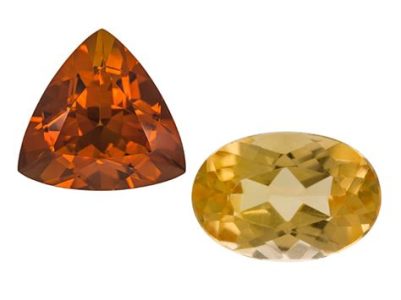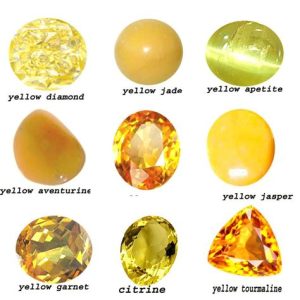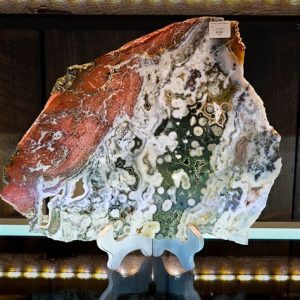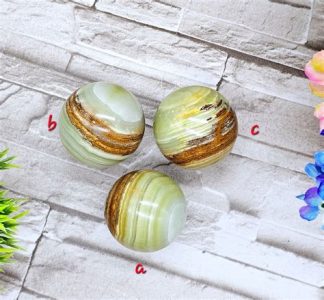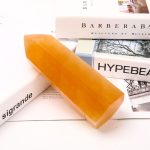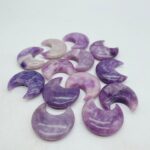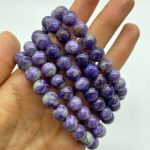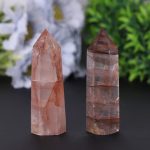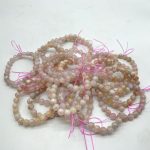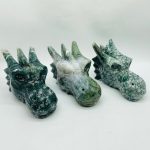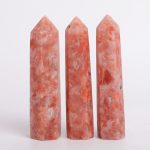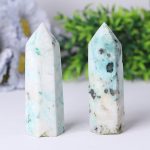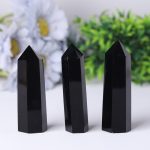What is a Blue-Green Stone?
A blue-green stone is a gemstone that exhibits hues ranging from light turquoise to deep teal. These stones are often associated with tranquility, peace, and healing.

Types of Blue-Green Stones
1. Turquoise
- Mohs Hardness: 5-6
- Chemical Composition: CuAl6(PO4)4(OH)8·4H2O
- Color: Light blue to deep turquoise
- Transparency: Opaque to translucent
- Distinctive Features: Veins or matrix of brown or black
2. Amazonite
- Mohs Hardness: 6-6.5
- Chemical Composition: KAlSi3O8
- Color: Light green to deep teal
- Transparency: Translucent to opaque
- Distinctive Features: Microcline twinning visible under a microscope
3. Aquamarine
- Mohs Hardness: 7.5-8
- Chemical Composition: Be3Al2(SiO3)6
- Color: Light blue to deep greenish-blue
- Transparency: Transparent to translucent
- Distinctive Features: Easily scratched by quartz
4. Variscite
- Mohs Hardness: 4-5
- Chemical Composition: AlPO4·2H2O
- Color: Light green to deep emerald green
- Transparency: Opaque
- Distinctive Features: Often mistaken for turquoise
How to Identify Blue-Green Stones
1. Color: Blue-green stones typically range in hue from light turquoise to deep teal.
2. Transparency: These stones can be opaque, translucent, or transparent.
3. Hardness: Blue-green stones vary in hardness from 4 to 8 on the Mohs scale.
4. Veining: Some blue-green stones, such as turquoise, exhibit veins or matrix of brown or black.
5. Twinning: Amazonite exhibits microcline twinning, which can be seen under a microscope.
Blue-Green Stone Identification: VS Other Stones
Turquoise VS Chrysocolla
- Turquoise: Opaque, veins or matrix, harder (5-6 Mohs)
- Chrysocolla: Translucent, massive, softer (2-4 Mohs)
Amazonite VS Nephrite Jade
- Amazonite: Microcline twinning, greener hue
- Nephrite Jade: No twinning, whiter hue
Aquamarine VS Blue Topaz
- Aquamarine: Scratched by quartz (7.5-8 Mohs)
- Blue Topaz: Not scratched by quartz (8 Mohs)
Blue-Green Stone Benefits and Uses
Benefits
- Calming and soothing effects
- Promotes tranquility and peace
- Aids in emotional healing
- Enhances creativity and communication
- Boosts self-confidence and assertiveness
Uses
- Jewelry: Rings, necklaces, bracelets, earrings
- Home décor: Sculptures, vases, tiles
- Feng shui: Attracting positive energy and abundance
Current Status and Future Applications
The global demand for blue-green stones is expected to reach $2.5 billion by 2025. In addition to traditional uses, researchers are exploring innovative applications:
New Word: Aquaponics
- Combining aquaculture and hydroponics
- Utilizing blue-green stones as a substrate for nitrifying bacteria
FAQs
- Which blue-green stone is the most valuable? Aquamarine
- What causes the blue color in blue-green stones? Copper and aluminum ions
- Can blue-green stones be synthetically created? Yes
- What is the metaphysical meaning of blue-green stones? Tranquility, healing, creativity
- How can I clean my blue-green stone jewelry? With a mild soap solution
- Can blue-green stones be used in feng shui? Yes
- What is the Mohs hardness of turquoise? 5-6
- Which blue-green stone exhibits microcline twinning? Amazonite
Conclusion
Blue-green stones are beautiful and versatile gemstones with a wide range of benefits and uses. By understanding their unique characteristics and properties, you can confidently identify and appreciate these captivating treasures.

